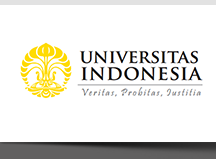Abstract
This study examines the impact of SEZs in Indonesia on regional economic growth, including impacts on neighbouring regencies and cities, using a Dynamic Spatial Durbin Model. The study indicates the impact of SEZs is only evident in tourism SEZs, while manufacturing SEZs have no discernible impact. The impact of SEZs on regional growth is transient. The significant variables are prior regional growth, Domestic Investment (PMDN), Labor Force Participation Rate (TPAK), Availability of Information and Communication Technology, Human Development Index (HDI), and GRDP growth. Influencing variables in the surrounding areas include GRDP growth and the diffusion of information and communication technologies.
Bahasa Abstract
Penelitian ini bertujuan untuk menganalisis pengaruh KEK di Indonesia terhadap pertumbuhan ekonomi regional, di wilayah dan di kabupaten/kota sekitarnya dengan model Dynamic Spatial Durbin (SDM). Hasil penelitian menunjukkan bahwa pengaruh KEK terhadap pertumbuhan wilayah hanya terdapat pada KEK berbasis Pariwisata, sedangkan pada KEK berbasis Manufaktur belum berdampak signifikan. Pengaruh KEK pada pertumbuhan wilayah bersifat jangka pendek. Variabel kontrol yang signifikan adalah pertumbuhan wilayah sebelumnya, Penanaman Modal Dalam Negeri (PMDN), Tingkat Partisipasi Angkatan Kerja (TPAK), ketersediaan teknologi informasi dan komunikasi, Indeks Pembangunan Manusia (IPM), dan pertumbuhan PDRB. Bagi wilayah sekitar, variabel yang berpengaruh adalah pertumbuhan PDRB serta teknologi informasi dan komunikasi.
References
[1] Abagna, M. A. (2023). Special economic zones and local economic activities in Ethiopia UCD Centre for Economic Research Working Paper, WP23/14. UCD School of Economics, University College Dublin. Diakses 10 Mei 2023 dari https://www.ucd.ie/geary/static/SOEWP/SOEWP2023/ SOEWP23_14.pdf.
[2] Abreu, M. A., De Groot, H. L., & Florax, R. J. G. M. (2005). Space and growth: A survey of empirical evidence and methods. Région et Développement, 21, 13-44.
[3] Alder, S., Shao, L., & Zilibotti, F. (2016). Economic reforms and industrial policy in a panel of Chinese cities. Journal of Economic Growth, 21, 305-349. doi: https://doi.org/10.1007/s10887-016-9131-x.
[4] Alkon, M. (2018). Do special economic zones induce developmental spillovers? Evidence from India’s states. World Development, 107, 396-409. doi: https://doi.org/10.1016/j.worlddev.2018.02.028.
[5] Álvarez, I. C., & Barbero, J. (2016). The public sector and convergence with spatial interdependence: empirical evidence from Spain. Applied Economics, 48(24), 2238-2252. doi: https://doi.org/10.1080/00036846.2015.1117048.
[6] Amidi, S., Fagheh Majidi, A., & Javaheri, B. (2020). Growth spillover: A spatial dynamic panel data and spatial cross section data approaches in selected Asian countries. Future Business Journal, 6, 20. doi: https://doi.org/10.1186/s43093-020-00026-9.
[7] Anselin, L., & Bera, A. K. (1998). Spatial dependence in linear regression models with an introduction to spatial econometrics. In A. Ullah & D. E. A. Giles (Eds.), Handbook of applied economic statistics (pp. 237-290). CRC Press. doi: https://doi.org/10.1201/9781482269901-36.
[8] Aspiansyah, A., & Damayanti, A. (2019). Model pertumbuhan ekonomi Indonesia: Peranan ketergantungan spasial. Jurnal Ekonomi dan Pembangunan Indonesia, 19(1), 62-83. doi: https://doi.org/10.21002/jepi.2019.04.
[9] Audretsch, D. B., & Feldman, M. P. (1996). R&D spillovers and the geography of innovation and production. The American Economic Review, 86(3), 630-640. https://www.jstor.org/stable/2118216.
[10] Bappenas. (2019). Perkembangan pembangunan KEK dan KPBPB di Indonesia 2017–2018. Direktorat Pengembangan Wilayah dan Kawasan, Badan Perencanaan Pembangunan Nasional. Diakses 10 Desember 2022 dari https://simreg.bappenas.go.id/assets/temaalus/ document/Publikasi/DokPub/Booklet_Perkembangan_ KEK_dan_KPBPB_2017-2018_compressed.pdf.
[11] Belotti, F., Hughes, G., & Mortari, A. P. (2017). Spatial panel-data models using Stata. The Stata Journal, 17(1), 139-180. doi: https://doi.org/10.1177/1536867X1701700109.
[12] Börjesson, M., Isacsson, G., Andersson, M., & Anderstig, C. (2019). Agglomeration, productivity and the role of transport system improvements. Economics of Transportation, 18, 27-39. doi: https://doi.org/10.1016/j.ecotra.2018.12.002.
[13] Bradley, R., & Gans, J. S. (1998). Growth in Australian cities. Economic Record, 74(226), 266-278. doi: https://doi.org/10.1111/j.1475-4932.1998.tb01923.x.
[14] Capello, R. (2007). A forecasting territorial model of regional growth: The MASST model. The Annals of Regional Science, 41, 753-787. doi: https://doi.org/10.1007/s00168-007-0146-2.
[15] Chen, M., Huang, X., Huang, G., & Yang, Y. (2021). New urbanization and informal employment: Scale, pattern, and social integration. Progress in Geography, 40(1), 50-60.
[16] Dewan Nasional KEK. (2020). Laporan, 2011-2019. Dewan Nasional Kawasan Ekonomi Khusus Republik Indonesia. Diakses 10 Desember 2022 dari https://kek.go.id/id/service/report.
[17] Elhorst, J. P. (2012). Dynamic spatial panels: Models, methods, and inferences. Journal of Geographical Systems, 14(1), 5-28. doi: https://doi.org/10.1007/s10109-011-0158-4.
[18] Ertur, C., & Koch,W. (2007). Growth, technological interdependence and spatial externalities: Theory and evidence. Journal of Applied Econometrics, 22(6), 1033-1062. doi: https://doi.org/10.1002/jae.963.
[19] Fu, S., & Hong, J. (2011). Testing urbanization economies in manufacturing industries: Urban diversity or urban size?. Journal of Regional Science, 51(3), 585-603. doi: https://doi.org/10.1111/j.1467-9787.2010.00702.x.
[20] Gao, L. H., Wang, G. Q., & Zhang, J. (2021). Industrial agglomeration analysis based on Spatial Durbin Model: Evidence from Beijing-Tianjin-Hebei economic circle in China. Complexity, 2021(1), 3788784. doi: https://doi.org/10.1155/2021/3788784.
[21] Greenstone, M., Hornbeck, R., & Moretti, E. (2010). Identifying agglomeration spillovers: Evidence from winners and losers of large plant openings. Journal of Political Economy, 118(3), 536-598. doi: https://doi.org/10.1086/653714.
[22] Hariani RS, P., & Silvia, E. (2017). Analisis pengaruh infrastruktur pembangunan Kawasan Ekonomi Khusus (KEK) Sei Mangkei terhadap pertumbuhan ekonomi di Kabupaten Simalungun. Jurnal Ekonomikawan, 15(1), 16-36. doi: https://doi.org/10.30596/ekonomikawan.v15i1.1028.
[23] Kline, P., & Moretti, E. (2014). Local economic development, agglomeration economies, and the big push: 100 years of evidence from the Tennessee Valley Authority. The Quarterly Journal of Economics, 129(1), 275-331. doi: https://doi.org/10.1093/qje/qjt034.
[24] LeSage, J., & Pace, R. K. (2009). Introduction to spatial econometrics. Chapman and Hall/CRC.
[25] Liu, H., Xiao, Y., Wang, B., & Wu, D. (2022). Effects of tourism development on economic growth: An empirical study of China based on both static and dynamic spatial Durbin models. Tourism Economics, 28(7), 1888-1913. doi: https://doi.org/10.1177/13548166211021175.
[26] Mauleny, A. T. (2016). Aglomerasi, perubahan sosial ekonomi, dan kebijakan pembangunan Jakarta. Jurnal Ekonomi dan Kebijakan Publik, 6(2), 147-162. doi: http://dx.doi.org/10.22212/jekp.v6i2.351.
[27] Nguyen, H. Q., & Tien, D. N. (2021). Special economic zones and FDI attraction to districts in Vietnam: A nonparametric approach. The Singapore Economic Review, 66(4), 1027-1053. doi: https://doi.org/10.1142/S0217590820490077.
[28] Prastiwi, D. A. & Khoirunurrofik, K. (2025). The spatial spillover effects of small and medium-sized enterprise clusters and industrial estates on the unemployment rate: Evidence from Java. Regional Statistics, 15(2), 187-207. doi: 10.15196/RS150201.
[29] Rosenthal, S. S.,&Strange,W. C. (2020).How close is close? The spatial reach of agglomeration economies. Journal of Economic Perspectives, 34(3), 27-49. doi: 10.1257/jep.34.3.27.
[30] Singala, S., Atmavilas, Y., & Singh, E. (2011). Special economic zones in India: policies, performance and problems. ASCI Journal of Management, 40(2), 21-59.
[31] Sitorus, A. C., Siregar, R. T., Silalahi, M., & Damanik, S. E. (2021). Pengaruh perkembangan kota perdagangan terhadap daerah Kecamatan Bosar Maligas Kabupaten Simalungun. Jurnal Regional Planning, 3(2), 70-85. doi: https://doi.org/10.36985/88pjnf93.
[32] Solow, R. M. (1956). A contribution to the theory of economic growth. The Quarterly Journal of Economics, 70(1), 65-94. doi: https://doi.org/10.2307/1884513. [33] Sukirno, S. (2017). Mikroekonomi: Teori pengantar (edisi ketiga). PT. Raja Grafindo Persada.
[34] Sun, X., Chen, F., & Hewings, G. J. (2017). Spatial perspective on regional growth in China: Evidence from an extended neoclassic growth model. Emerging Markets Finance and Trade, 53(9), 2063-2081. doi: https://doi.org/10.1080/1540496X.2016.1275554.
[35] Swan, T. W. (1956). Economic growth and capital accumulation. Economic Record, 32(2), 334-361. doi: https://doi.org/10.1111/j.1475-4932.1956.tb00434.x.
[36] Syali, T., Muhibuddin, A., & Saleh, H. (2020). Pengaruh pembangunan Kawasan Ekonomi Khusus Sorong terhadap pertumbuhan ekonomi Provinsi Papua Barat. Urban and Regional Studies Journal, 3(1), 32-40.
[37] Taufiqurrahman, T., & Khoirunurrofik, K. (2023). Special Economic Zones (SEZs) impact on poverty in Indonesia. Jurnal Perencanaan Pembangunan: The Indonesian Journal of Development Planning, 7(2), 231-249. doi: https://doi.org/10.36574/jpp.v7i2.473.
[38] Todaro, M. P., & Smith, S. C. (2009). Economic development (10th edition). Pearson Education Ltd.
[39] Verstraten, P., Verweij, G., & Zwaneveld, P. J. (2019). Complexities in the spatial scope of agglomeration economies. Journal of Regional Science, 59(1), 29-55. doi: https://doi.org/10.1111/jors.12391.
[40] Wang, J. (2013). The economic impact of special economic zones: Evidence from Chinese municipalities. Journal of Development Economics, 101, 133-147. doi: https:// doi.org/10.1016/j.jdeveco.2012.10.009.
[41] Widianto, Y. W., & Yudhistira, M. H. (2021). Kawasan ekonomi khusus dan pertumbuhan ekonomi daerah: Bukti empiris KEK Sei Mangkei. Jurnal Anggaran dan Keuangan Negara Indonesia (AKURASI), 3(2), 1-15. doi: https://doi.org/10.33827/akurasi2021.vol3.iss2.art130.
[42] Wu, Y. P., & Li, L. (2017). Performance evaluation of special economic zones in China: From the perspective of firm innovation capacity. Journal of Financial Research, 6, 126-141.
[43] Wu, M., Liu, C., & Huang, J. (2021). The special economic zones and innovation: Evidence from China. China Economic Quarterly International, 1(4), 319-330. doi: https://doi.org/10.1016/j.ceqi.2021.11.004.
[44] Yao, Y., Pan, H., Cui, X., & Wang, Z. (2022). Do compact cities have higher efficiencies of agglomeration economies? A dynamic panel model with compactness indicators. Land Use Policy, 115, 106005. doi: https://doi.org/10.1016/j.landusepol.2022.106005.
Recommended Citation
Violita, Rizani and Khoirunurrofik, Khoirunurrofik
(2025)
"Peran Kawasan Ekonomi Khusus (KEK) terhadap Pertumbuhan Ekonomi Wilayah: Analisis Spasial Eksternalitas,"
Jurnal Ekonomi dan Pembangunan Indonesia: Vol. 25:
No.
1, Article 6.
DOI: 10.7454/jepi.v25i1.1483
pp.95-111
Available at:
https://scholarhub.ui.ac.id/jepi/vol25/iss1/6







